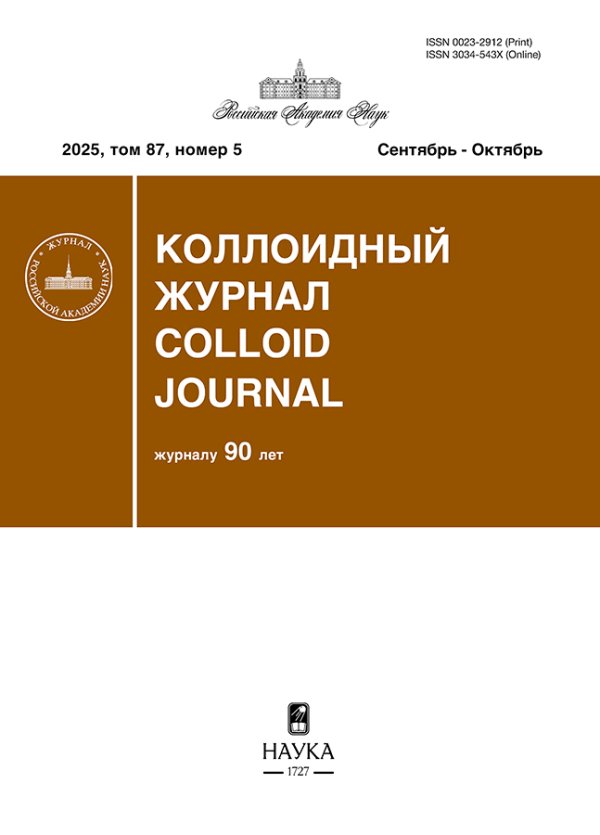TRIC EXPLOSION OF AEROSOLS. TO THE 115TH ANNIVERSARY OF THE TUNGUSKA METEORITE
- Authors: KIRSH A.A.1
-
Affiliations:
- National Research Centre Kurchatov Institute, Moscow, Russia
- Issue: Vol 85, No 3 (2023)
- Pages: 390-393
- Section: ГИПОТЕЗЫ
- Submitted: 16.10.2023
- Published: 01.05.2023
- URL: https://journals.rcsi.science/0023-2912/article/view/137250
- DOI: https://doi.org/10.31857/S0023291223600104
- EDN: https://elibrary.ru/ZOQYYK
- ID: 137250
Cite item
Full Text
Abstract
A hypothesis has been proposed according to which the preserved traces of the impact on the nature caused by the explosion of the Tunguska meteorite are the result of electrical discharges in a cloud of solid particles, which, when moving at the space velocity in the upper atmosphere, were heated up to a high temperature and, due to thermionic emission, acquired large positive charges. The released thermo-electrons attached to air molecules and lagged behind the charged particles. The separation of the charges in the cloud caused powerful discharges similar to horizontal lightnings in clouds. The consequences of the discharges in the cloud of highly charged solid particles, which gave rise to the generation of hard ionizing radiation, are discussed.
About the authors
A. A. KIRSH
National Research Centre Kurchatov Institute, Moscow, Russia
Author for correspondence.
Email: aa-kirsh@yandex.ru
Россия, 123182, Москва, пл. Академика Курчатова, 1
References
- Васильев Н.В. Тунгусский метеорит. Космический феномен лета 1908 г. М.: “Русская панорама”, 2004. 372 C., ISBN 5-931165-106-3.
- Turco R.P., Toon O.B., Parc C., Whitten R.C., Pollack J.B., Noerdlinger P. An analysis of the physical, chemical, optical and historical impacts of the 1908 Tunguska meteor fall // Icarus. 1982. V. 50. № 1. P. 1–52. https://doi.org/10.1016/0019-1035(82)90096-3
- Kirsch A.A., Kravtsov A.K. Study of submicron monodisperse droplets generation by electrostatic atomization // Abstract Book AAAR′ 90. 7. C. 2. P. 192.
- Кирш А.А. Высокозаряженные аэрозоли // Коллоид. журн. 2022. Т. 84. № 1. С. 42‒48.
- Кирш А.А. Электрогидродинамическое получение монодисперсных субмикронных аэрозолей // Коллоид. журн. 2017. Т. 79. № 1. С. 44‒59.
- Slattery J.C., Friichtenicht J.F., Hamermesh B. Interaction of micrometeorites with gaseous targets // AIAA J. 1964. V. 2. № 3. P. 543‒548. https://doi.org/10.2514/3.2360
- Базелян Э.М., Райзер Ю.П. Искровой разряд. М.: Мир, 1997.
- Адамчук Ю.В., Титов В.В. Электрические процессы и образование молний в вулканическом аэрозоле // Препринт Института атомной энергии им. И.В. Курчатова, ИАЭ-4016/1. М.: ИАЭ, 1984.
- Стаханов И.П. О физической природе шаровой молнии. М.: Научный мир, 1996.
- Kim D.S., Lee D.S., Woo C.G., Choi M. Control of nanoparticle charge via condensation magnification // J. Aerosol Sci. 2006. V. 37. №. 12. P. 1876–1882. https://doi.org/10.1016/j.jaerosci.2006.08.003
- Ganapathy R. // The Tunguska explosion of 1908: Discovery of the meteoritic debris near the explosion site and the South Pole // Science. 1983. V. 220. № 4602. P. 1158–1161. https://doi.org/10.1126/science.220.4602.1158
- Александров П.А., Горев В.В. Космическая защита Земли: первый эксперимент // Препринт ИППФ НАН РА, Ереван, 2014, ISBN 978-99941-2-948-5.
Supplementary files










